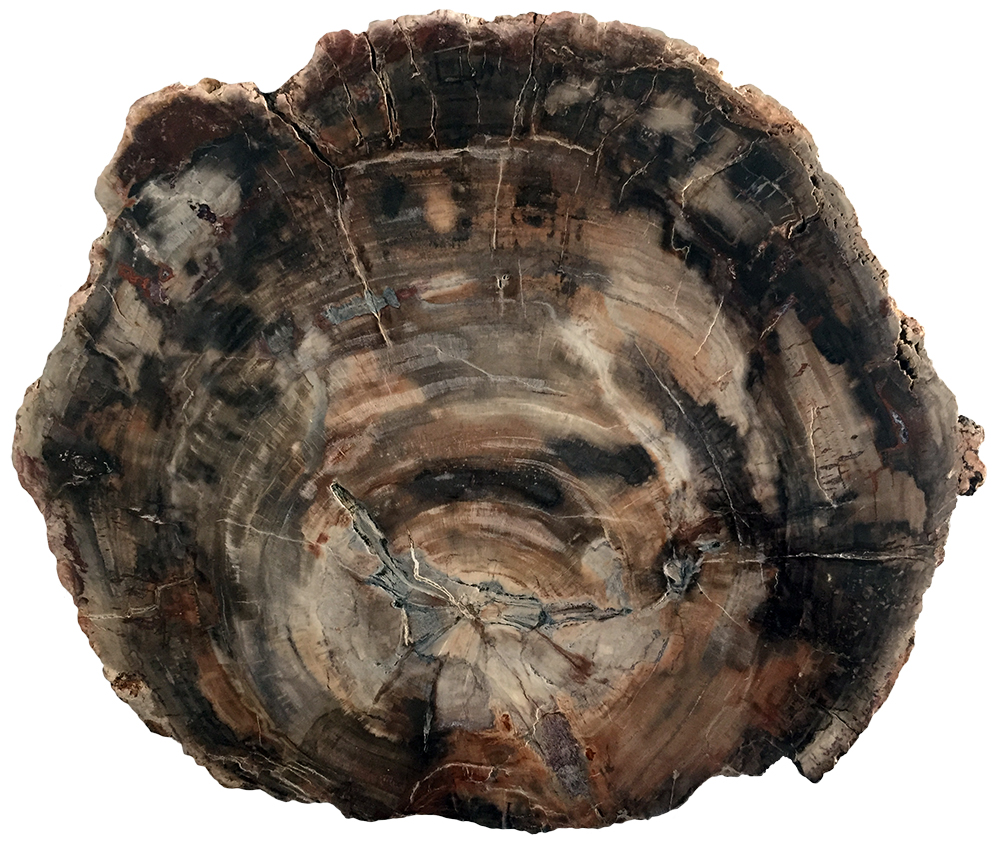
Petrified wood is a name commonly given to fossil wood whose original organic material was replaced by silica (in the form of chalcedony, opal, or chert). This silica is precipitated from groundwater, typically in anoxic conditions that slowed the wood’s bacterial decay and allowed mineral precipitation to fill pores and replace cell walls. Hence, this replacement not only preserves the original wood’s general shape and surface texture, but in many cases even preserves traces of the wood’s cellular structure. Rapid burial is necessary for wood to last long enough to be replaced and petrified wood is particularly common in volcanic ash deposits - not only because the ash quickly buries the wood but easily dissolves to create silica-rich groundwaters. The brilliant colors found in some petrified woods are due to mineral impurities in the precipitated silica. Trace metals, such as iron, chromium, or manganese, produce a variety of red, green, or dark hues in the petrified wood’s otherwise light-colored silica.
Although petrified wood is known from across the globe, it has a limited temporal range. The oldest examples are found in Devonian strata (roughly 390 million years old) and occurrences extend to the modern. This temporal restriction is simply because trees did not arise until the Devonian. In a similar manner, coal deposits share the same temporal range as petrified wood and for the same reason. The rise of woody plants was necessary for both.
Hence, while petrified wood is often admired for its beauty and form, from an evolutionary perspective its main value is that it represents an important transition in the evolution of Earth’s terrestrial systems. The evolution of trees not only led to petrified wood and the first coal deposits, but also the Earth’s first tiered terrestrial ecosystems. Ones with arboreal life living in tree canopies and high browsing animals that were not only capable of feeding on forest canopies, but through that feeding transform terrestrial communities. In that sense, petrified wood reflects a significant step toward our modern world.